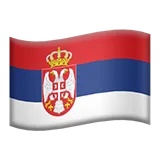We’re back with Part 2 of Alexey Kulakov’s longread about design and automation, where he argues about the possibility of AI taking over designers’ work. If you missed it, in the first part of the article we talked about how AI-based tools improve such design processes as client briefing, research, prototype development and testing.
6. Developing a style

Some may think that this is about artistic skills. But I’ll say it again: artistic skills are core for illustrators, not designers. Interface designers share competencies with engineers.
You don't have to be an artist to develop a style. Today designers have full access to the internet, so they can find good examples of style and reproduce them. Style development also consists of several stages:
- Analyzing references - researching examples of product designs. Searching for expressive techniques - choosing fonts, colors, determining rhythmics.
- Conceptualization and selection of visual metaphors. For example, Miro, a collaboration platform, has a very clear visual metaphor, a marker board.
- Creating a pattern palette is a collection of design elements (font styles, buttons, cards, etc.) that the designer assembles in a separate file and uses to compile the interface from.
- Composition building is about managing human perception. Any interface must be easy to perceive, so it must have a clear visual hierarchy.
- Adding key images. Part of the information on a website is perceived through imaginative thinking. A designer determines what images to show and adds them to the interface.
How do designers cope with this task?
Certainly, designers know how to develop style well. Some people think that it’s their main activity – but I guess by now you already know it’s not quite true.
What about robots?
Diffuse and GAN networks, like DALL-E or Glide, analyze pictures, so they have millions of technique collections. A year ago I thought that neural networks were not creative.Today I think they are, and they are becoming more creative with each update. In a couple of years it will be at least strange not to use a neural network as a brainstorming partner.
There are a huge number of services with pattern collections to make your composition more expressive. For example, this Figma plugin shares web design inspiration. But still the integration of all this huge and ever-increasing palette of possibilities is left to the individual. CLIP Interrogator 2.1 gives a prompt to the uploaded image; Fontjoy creates font pairs.
7. Engineering layout

Layout is what buttons, tabs, icons look like. It’s the exterior of the product, not the general approach to the interface, or an idea of how people will use it. Layout is what designers study at courses and add to their portfolios.
Creating layouts involves:
- working with the grid;
- typography;
- ensuring consistency of the elements
- creating a design system - a collection of all the patterns used in the design;
- creating illustrations or interacting with an illustrator;
- accentuation - the placement of accents.
How do designers cope with this task?
Designers do it well, but again, layouts are not the most important thing in a designer’s work.
What about robots?
You could use dozens of tools to work on layouts. The most obvious example is Figma, as it provides auto layouts, components, styles and lots of plugins. Now you don't have to calibrate colors, fonts, and spacing. Also you could use Webflow and Quarkly
On the one hand, the variety of tools equals more creative freedom for the designer. On the other hand, automated tools take away routine tasks –so possibly, in five years, designers will be paid less for routine work than they are today.
8. Conducting design supervision

Design oversight is controlling whether the final interface functions the way the designer intended. It includes:
- communication with users to understand whether they like the interface or not;
- background testing, as good designers are always pixel-hunting, i.e. looking to see if the interface is OK;
- interaction with developers – when designers realize that the design is inconvenient for users, or does not work as intended, they ask programmers to help them solve the problem.
How do designers cope with this task?
Design supervision is an important activity; designers are usually pretty good at it, and they love doing it.
What about robots?
If you want to understand how design works, you need analytics – so robots’ abilities are pretty limited here. However, they can significantly simplify the process: PixelPerfectTestMachine and Markup Validation Service test the layout.
9. Analyzing performance

Performance analytics is:
- Looking into web analytics to see if the interface is working;
- Analyzing qualitative data that you receive from talking to people and observing experiences ‘as is’.
- resolving contradictions. For example, at Rideró we have doubts about placing an ad banner that promotes our proofreading services in the text editor. On the one hand, it potentially increases sales, but on the other hand, it pisses off a part of users. Here's the contradiction: we have two goals, and we need to decide which one is more important.
How do designers cope with this task?
This is one of the core activities for a professional. One of the main things that designers have to learn in the first three years is how to answer these questions: ‘why am I doing the work I'm doing? How do I see that my work has benefited the company and its clients? What is the point of my work?’
What about robots?
There’s plenty of services to visualize data. To analyze the interface performance you will have to go through several steps:
- Implement an analytics system (Google Analytics 4 for web, GA4 or Amplitude for apps);
- Determine what metrics tell you about the user's interaction with the interface;
- learn how to collect and track them.
If you want to collect and analyze qualitative data you could use the Sense Machine neural network. It measures the mood and real emotional response of a person using facial expressions and eye movements. The final conclusions are still up to humans.
10. Ensuring interface development

Product development is an analytical skill that involves analyzing metrics and prioritizing. It’s not something a designer should be responsible for, as it’s usually done by a product manager. Still, design has a huge impact on the product vision. Understanding product management is a valuable skill for a designer.
Product development involves:
- Keeping the core product features, i.e. understanding and preserving the product's idea,
- coming up with improvements within the product idea,
- Pivot decision making, i.e. the ability to see that the team has hit a dead end and start redesigning;
- Redesign – a crucial activity if you see that everything has gone outdated. Redesign presupposes you go through all the steps from the start.
How do designers cope with this task?
As I mentioned, usually product development is the responsibility of product managers and directors. However, if the designer can provide valuable contribution to product development, then their position in the team becomes more
What about robots?
Data can help make decisions about redesign and highlight current issues. It can also suggest best practices. However, neural networks won't make the decision for you or say exactly how it should be done.
To summarize what I've said: as best practices emerge, their individual elements will be automated. Design will integrate those fragments in the areas where experience is changing and best practice is not yet available.
I've given some examples of different automation services (thanks to the JetStyle designers and art directors for helping me compile them) – but there are many more. One of the tool collections I’ve found useful is on Github. Explore and find something that can help you in your work.
Part 3 on the way! Alexey will share his vision on what the future of UX design holds. Stay tuned!








